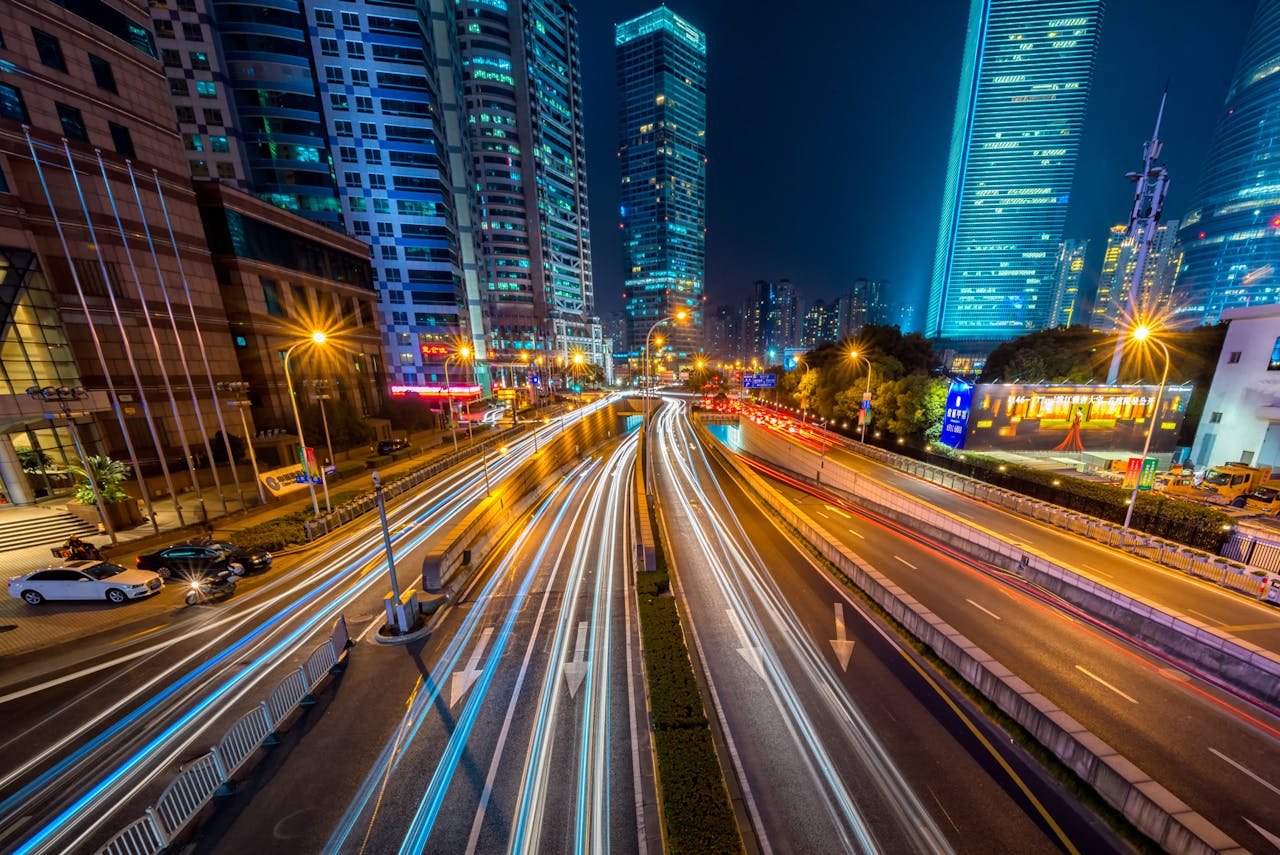Urbanization is rapidly increasing, with more than 60% of the global population expected to live in cities by 2025. As cities continue to grow, smart city technologies are emerging as a way to manage the challenges of urban life, such as congestion, pollution, and resource management. By integrating technology into every aspect of urban living, smart cities promise to provide more efficient, sustainable, and connected environments for their residents.
In this article, we’ll explore how smart city technologies are transforming urban living, the key innovations to expect by 2025, and the global impact of this digital urban revolution.
1. The Internet of Things (IoT): Building Connected Urban Infrastructures
The Internet of Things (IoT) lies at the heart of the smart city concept. By embedding sensors and devices into various aspects of urban infrastructure, cities can gather real-time data to improve efficiency and quality of life.
What’s happening:
- Smart traffic management systems are using IoT sensors to monitor traffic flow, reduce congestion, and optimize traffic lights. This not only improves mobility but also reduces fuel consumption and emissions.
- Smart street lighting is becoming more widespread. Using sensors and AI, these systems adjust the brightness of street lights based on real-time conditions, such as traffic volume and weather, leading to energy savings and increased safety.
- Waste management is becoming more efficient through IoT. Smart bins equipped with sensors monitor waste levels and send alerts when they need to be emptied, optimizing collection routes and reducing waste-related costs.
Why it matters: The IoT is transforming cities by making them data-driven. This enables predictive maintenance, real-time decision-making, and smarter resource management, contributing to more sustainable and livable cities.
🌐 By 2025, IoT technologies will help cities become more connected, efficient, and responsive to the needs of their residents.
2. 5G Connectivity: Enabling Faster, Smarter Cities
The roll-out of 5G networks is a game-changer for smart cities. With faster internet speeds, lower latency, and greater connectivity, 5G will enable new technologies to thrive and improve urban living.
What’s happening:
- Autonomous vehicles are set to revolutionize urban transportation. 5G will allow these vehicles to communicate in real-time with city infrastructure, enabling safe, efficient, and autonomous driving in urban environments.
- Smart buildings will rely on 5G to connect sensors, devices, and systems within structures, optimizing energy usage, security, and maintenance.
- IoT devices in smart cities will become more reliable and efficient with 5G connectivity, supporting innovations in smart grids, healthcare, and public safety.
Why it matters: 5G will be the backbone of smart city infrastructure, enabling seamless communication between devices, improving city services, and enhancing the quality of life for residents.
🚗 By 2025, 5G networks will empower cities to implement more autonomous solutions and drive real-time connectivity across urban environments.
3. AI and Machine Learning: Smart Decision Making for Urban Management
Artificial Intelligence (AI) and machine learning are essential to making smart cities work. These technologies allow cities to analyze large volumes of data, enabling better decision-making and more efficient resource management.
What’s happening:
- AI-powered traffic management systems are analyzing traffic patterns, predicting congestion, and dynamically adjusting traffic signals to reduce delays and accidents.
- AI-driven public safety systems are being deployed to monitor public spaces, detect unusual activity, and help prevent crime in real-time.
- Energy management is being optimized through AI. Smart grids use machine learning to predict electricity demand and adjust energy distribution accordingly, improving efficiency and reducing costs.
Why it matters: AI and machine learning make urban systems smarter by helping cities anticipate problems, optimize resources, and automate processes, leading to more sustainable and resilient urban environments.
🤖 By 2025, AI will be deeply integrated into city systems, making urban management more efficient, responsive, and predictive.
4. Sustainable and Green Technologies: Shaping the Future of Urban Living
Sustainability is a core focus of smart cities. As the world faces the challenges of climate change, resource scarcity, and urban pollution, smart cities are turning to green technologies to reduce environmental impact and promote sustainable living.
What’s happening:
- Solar power and wind energy are becoming key sources of energy in smart cities, with many cities integrating renewable energy sources into their infrastructure to reduce dependence on fossil fuels.
- Green roofs and vertical gardens are becoming common features of urban architecture, improving air quality and providing green spaces in densely populated areas.
- Electric public transport and charging infrastructure are growing, with cities implementing electric buses, e-bikes, and EV charging stations to reduce emissions and promote sustainable travel options.
Why it matters: Smart cities are being designed with sustainability at their core, creating healthier and more eco-friendly environments for residents while addressing the global climate crisis.
🌱 By 2025, smart cities will be leading the way in sustainable urban development, using renewable energy and green technologies to create eco-friendly urban environments.
5. Smart Healthcare: Enhancing Well-being Through Technology
Health is a top priority for smart cities, and technology is playing a crucial role in improving access to healthcare services, patient outcomes, and overall well-being.
What’s happening:
- Telemedicine and remote patient monitoring are becoming mainstream, with smart cities providing infrastructure to enable access to healthcare services via digital platforms.
- Smart hospitals are utilizing IoT devices, AI, and big data to improve patient care, reduce wait times, and optimize medical resource allocation.
- Health and wellness apps are being integrated with city services, helping residents track their health metrics and access personalized health advice in real time.
Why it matters: By leveraging technology, smart cities are making healthcare services more accessible, personalized, and efficient, improving the overall quality of life for urban residents.
🏥 By 2025, smart cities will offer seamless access to advanced healthcare services, promoting a healthier, more connected urban lifestyle.
6. Digital Governance: Enhancing Civic Engagement
In smart cities, technology is also improving how citizens interact with local governments. Digital governance will make it easier for residents to engage in decision-making processes and access public services.
What’s happening:
- E-government platforms will allow citizens to access government services, pay taxes, and submit requests online, reducing administrative overhead and increasing transparency.
- Citizen engagement platforms will enable residents to voice their opinions, participate in city planning, and collaborate with government officials on community issues.
- Blockchain is being explored for secure and transparent voting systems, ensuring that elections and civic decisions are fair and tamper-proof.
Why it matters: Digital governance fosters greater transparency, accountability, and civic participation, allowing residents to play an active role in shaping their cities.
🏙️ By 2025, digital governance will become a key feature of smart cities, enhancing citizen engagement and making local governments more efficient and responsive.
Conclusion: The Smart Cities of Tomorrow
As cities around the world continue to grow, smart city technologies are poised to revolutionize how we live, work, and interact with our urban environments. By 2025, these technologies will create cities that are not only more connected and efficient but also more sustainable and inclusive.
From IoT and 5G connectivity to AI-powered decision-making and green technologies, smart cities will use technology to address the challenges of urban living while improving the quality of life for residents. The future of cities is smart, sustainable, and innovative — and the changes we see over the next few years will shape the urban landscapes of tomorrow.
You May Also Like :







